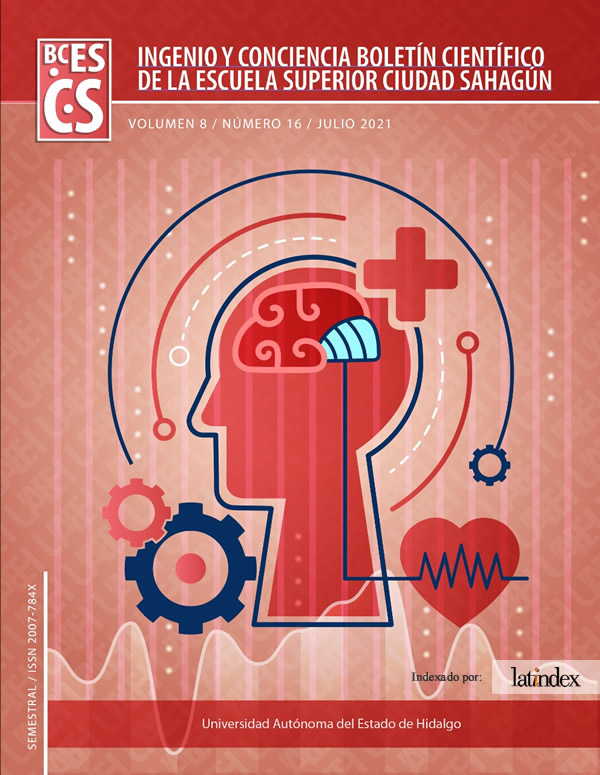Design of a dental implant: mechanical properties and biocompatibility
Abstract
The document presents the design of a dental implant. Ti Grade 4 alloy was the material used for the design. The modelling of mechanical properties was carried out with the use of computer programs. The three-dimensional model and stress analysis of the implant was obtained using the SolidWorks program. The mechanical properties were estimated with the Jmat program. The results indicated that the dental implant can resist mechanical stress according to its function. However, the partial biocompatibility of the metal implant is due to the difference between its modulus of elasticity (E = 116.33 GPa) with respect to the bone values (E = 10 - 30 GPa).
Downloads
References
Calin M, Gebert A, Cosmina, Ghinea P, Gostina Somayeh A, Christine M & Jürgen E. (2013). Designing biocompatible Ti-based metallic glasses for implant applications. Materials Science and Engineering: C, (33) 875-883.
Helsen J & Jürgen H. (1998). Metals as Biomaterials. Wiley, USA: 1998: 1-45.
NeoNickel (2021) https://www.neonickel.com/generate-alloy-pdf/?id=12622
SolidWorks (2018) https://help.solidworks.com/2018/english/SolidWorks/cworks/r_Maximum_von_Mises_Stress_Criterion.htm












